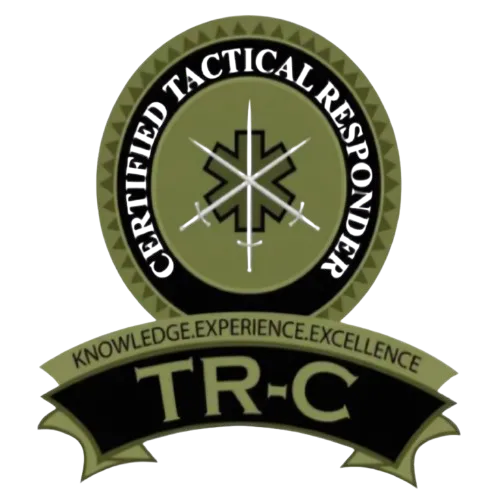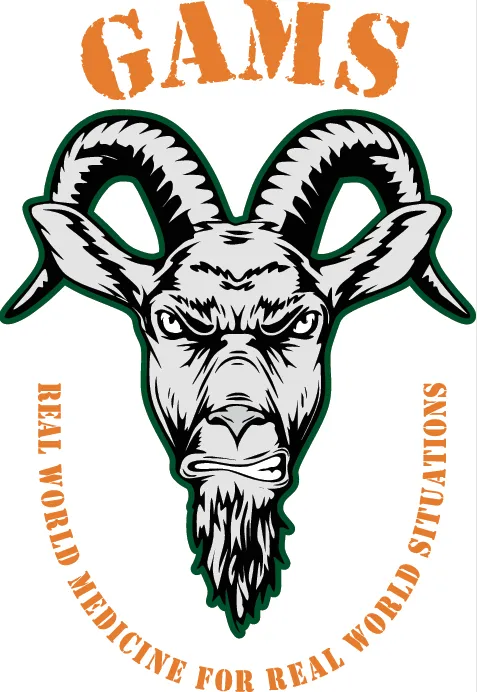
Tactical Responder IBSC Online Approved Review Course
Categories: Professional Responders
about course
The tactical environment is not for the faint of heart or ill-prepared. Training in tactical medicine is crucial for a number of reasons. It can, first and foremost, save lives. Prompt and competent medical care might make the difference between life and death in high-risk scenarios.
Tactical medical training can assist in ensuring that victims of injuries or wounds receive prompt and effective care by empowering medical practitioners with the knowledge and abilities to provide appropriate medical care. Goat-Trail Austere Medical Solutions (GAMS), Tactical Austere Medical Practitioner (TAM-P) Program combine tactics with trauma care, emergency medicine, Basic Life Support, and Advanced Life Support, and involve simulations and practical exercises to prepare learners for real-world situations.
The TAM-P Program is designed for EMS, fire, law enforcement, and first responders who operate in high-risk, high-stress circumstances. Our company motto says it all: “Real World Medicine for Real World Situations.
”Tactical medicine is a lifesaving mission, but it can also increase the effectiveness of the entire mission. Medical emergencies can interfere with operations and jeopardize staff safety in high-risk environments. Tactical medical training helps preserve operational preparedness by teaching people to deal with medical situations.
Any organization that operates in high-risk situations should make an investment in tactical medical training. Tactical medical training can contribute to saving lives, the success of missions, and the general safety and well-being of personnel by empowering people with the information and abilities necessary to respond to tactical medical.
TR-C Recertification
Recertification options for the Certified Tactical Responder (TR-C) credential include the following:
• Complete the required continuing education (CE) credits
The purpose of these recertification options is to ensure the certificate maintains competency and compliance with the domains listed on the Detailed Content Outline for the certification. Retaking the exam and/or providing approved continuing education hours ensures compliance and continued competency are met.
Eligibility Requirements for Recertification
•
•Hold an unrestricted license or certificate to practice as an Emergency Medical Responder (EMR), Emergency Medical Technician (EMT), Advanced Emergency Medical Technician (AEMT), or be currently licensed or certified as a Law Enforcement Officer (LEO).
•Hold medical director authorization to practice (Canada only).
•Have tactical knowledge consistent with current TCCC/TECC guidelines.
•Submit a license or certification for verification and approval. (Sworn law enforcement officers who have had formalized medical training but are not currently licensed may petition the IBSC for a waiver).
What Will You Learn?
Introduction to Tactical & Austere Medicine
Care Under Fire
Massive Hemorrhage Management
Airway Management
Respiratory Management
Circulatory Management
Head Injury & Hypothermia Management
Triage Considerations
Security Response Considerations
Evacuation Care
Environmental Emergencies Pt.1 Heat & Cold Injuries
Environmental Emergencies Pt. 2 Allergic Reaction
Environmental Pt. 3: Inhalation & Electrical Injuries
Advanced Airway Management Pt. 1
Advanced Airway Management Pt. 2
Acid-Base Balance & Ventilator Management
Advanced Cardiology Pt. 1
Advanced Cardiology Pt. 2
Flight Physiology & Gas Laws
Ballistic, Blast, and Less Lethal Injuries
Torso Trauma
Head, a, and Spinal Injuries
Musculoskeletal, Soft Tissue, and Burns
SWAT Unit Essential & Medical Considerations
M4 Carbine Firearms Safety & Marksmanship
Glock 19 Firearms Safety & Marksmanship
Operational SWAT Callout Types
Operational Tactics for Conventional Threats and Weapons Commonly Improvised
Active Shooter
Fire as a Weapon
K9 Operations
TEMS Legal Considerations
How is the Course Provided?
eLearning Model: TAM-P Program
• Online or In-Person Course: The course consists of an interactive PowerPoint presentation that is self-paced or instructor lead and includes quizzes after each session.
All course students receive the following certifications:
• IBSC – Approved Tactical Responder Review Course Certificate = 16 CEUs

TACTICAL RESPONDER IBSC Approved Review Course
$350.00
WHAT WE OFFER
Our Best Selling Products

Leathered Granite
$65.00 $65.00

Calacatta
$20.00

Carrara white marble
$18.00 $20.00
JOIN A NEWSLETTER
©Copyrights 2025 GAMS. All Rights Reserved.
